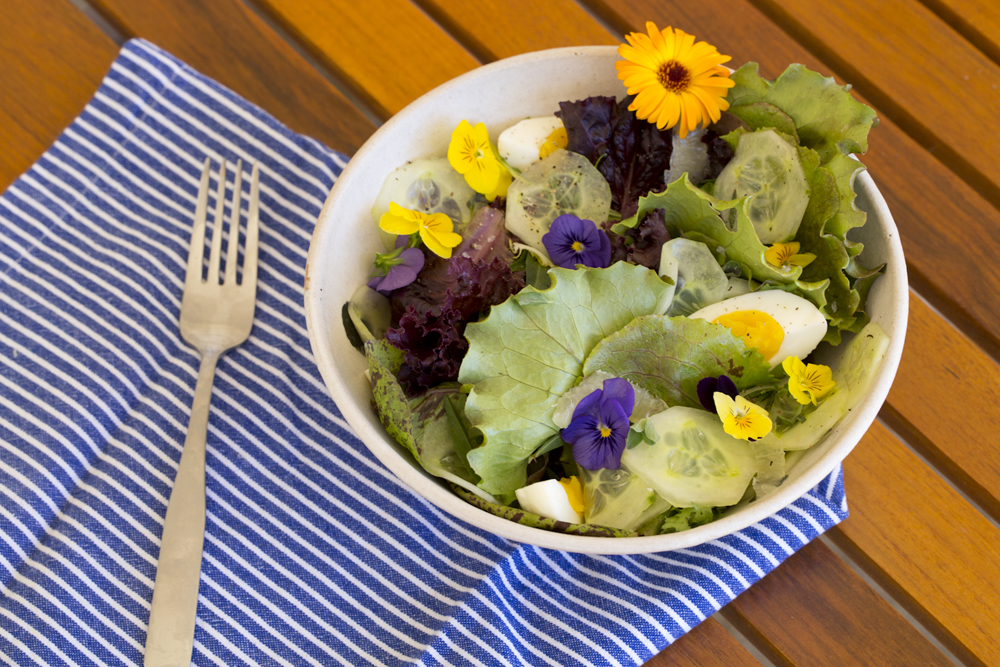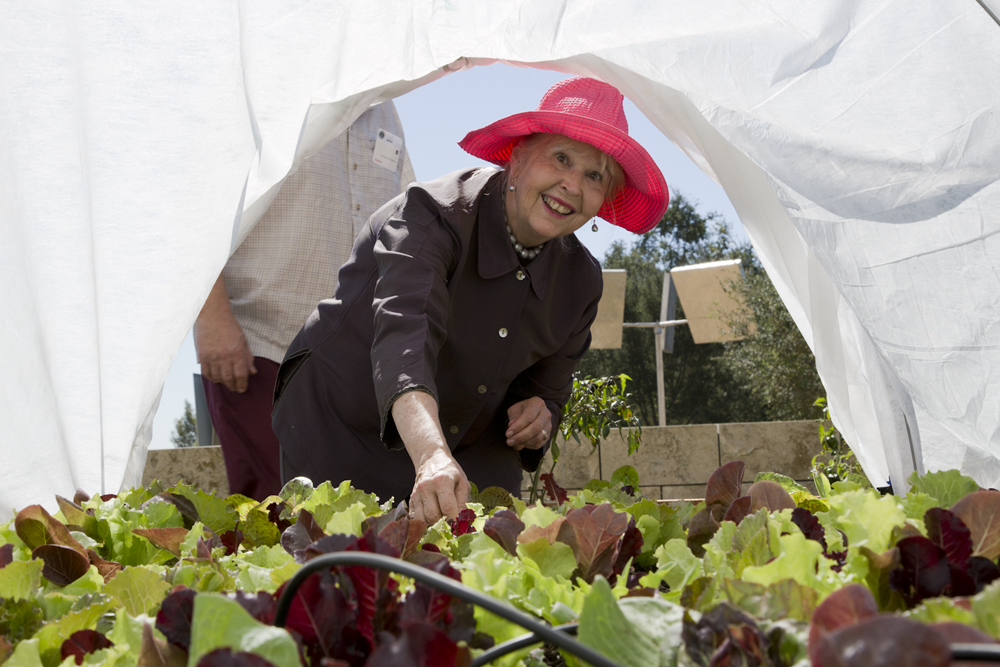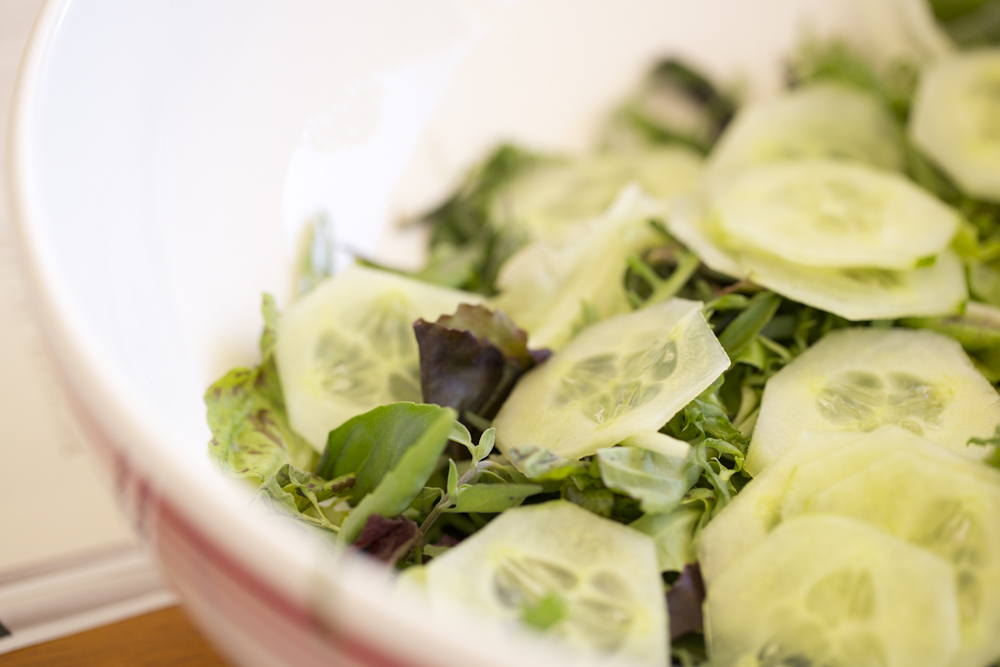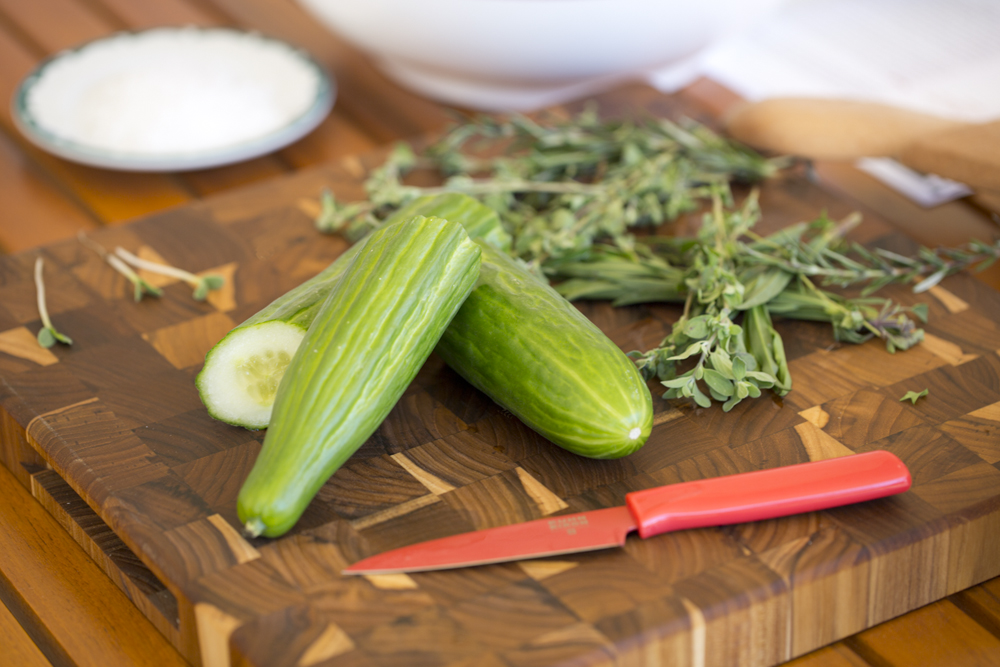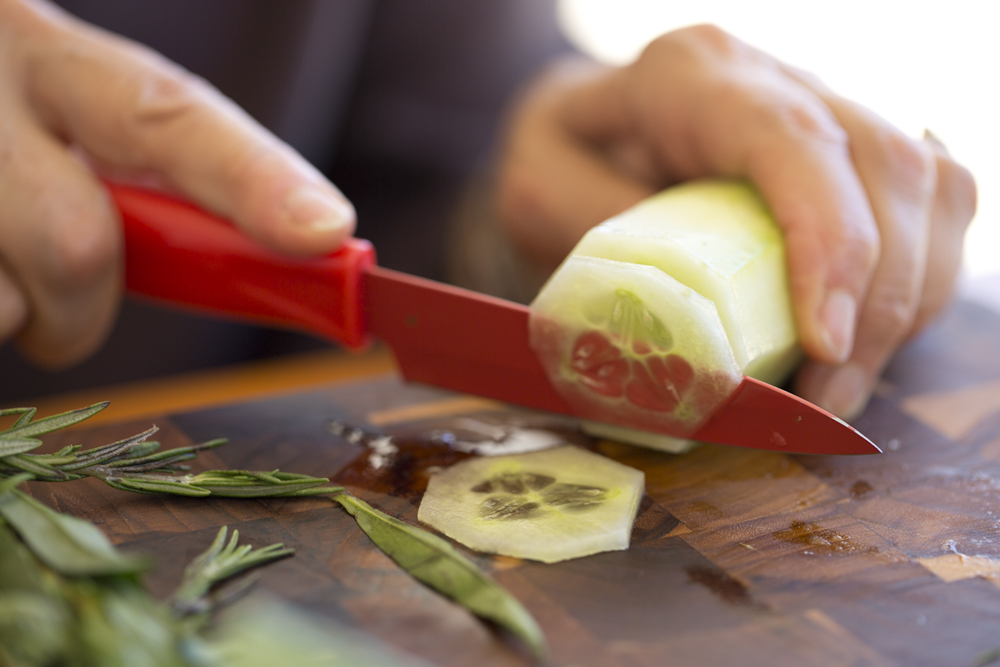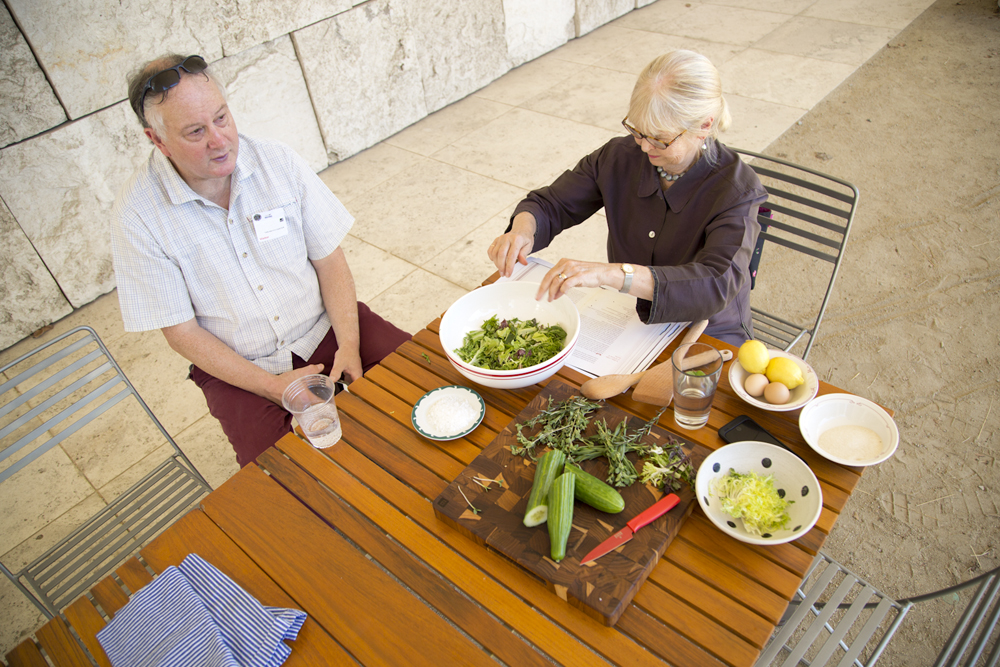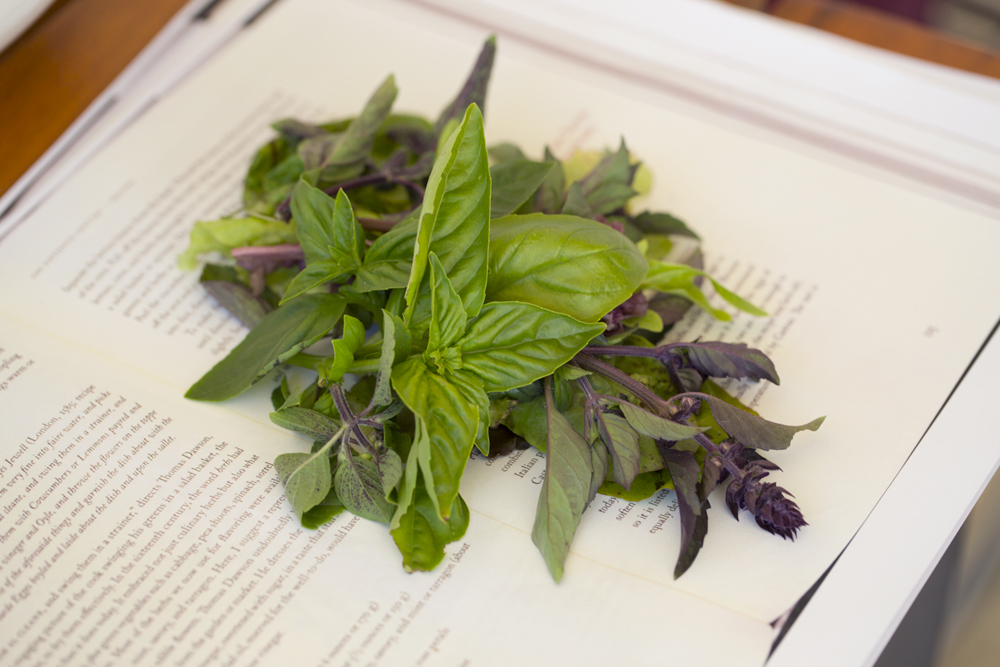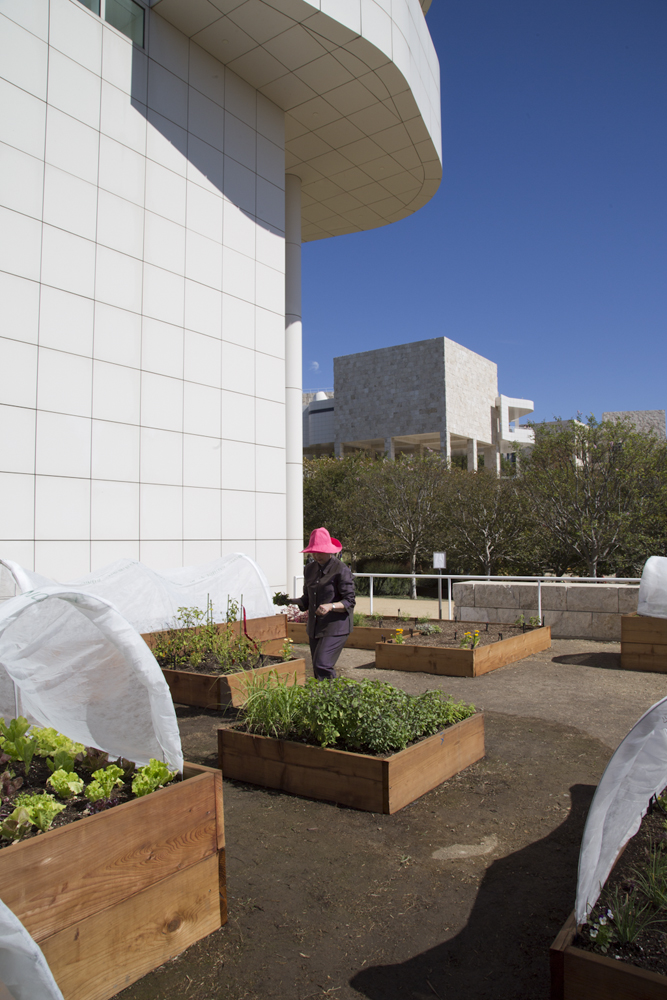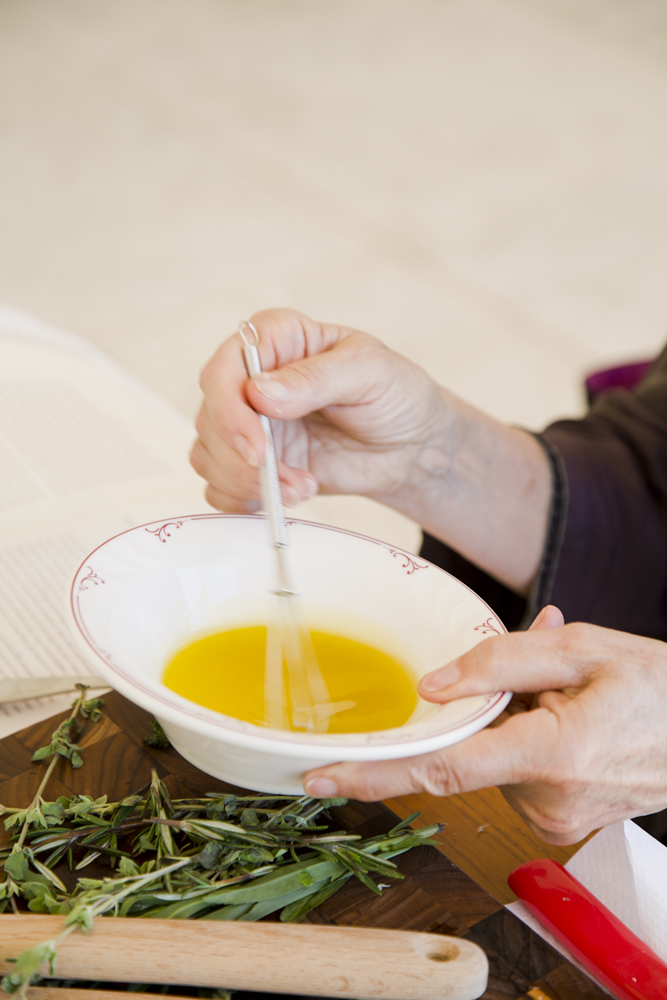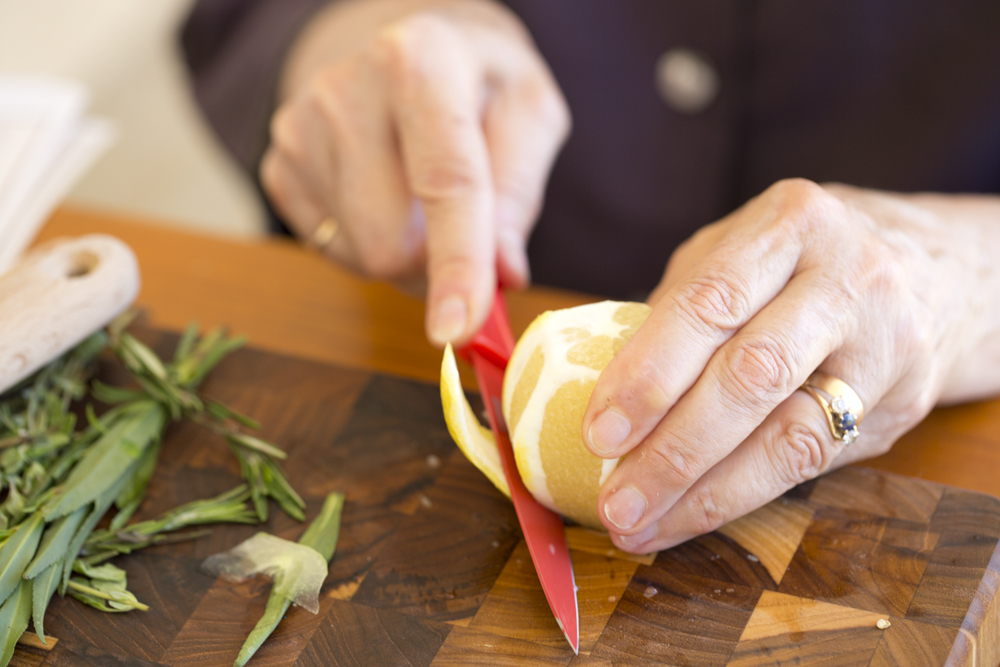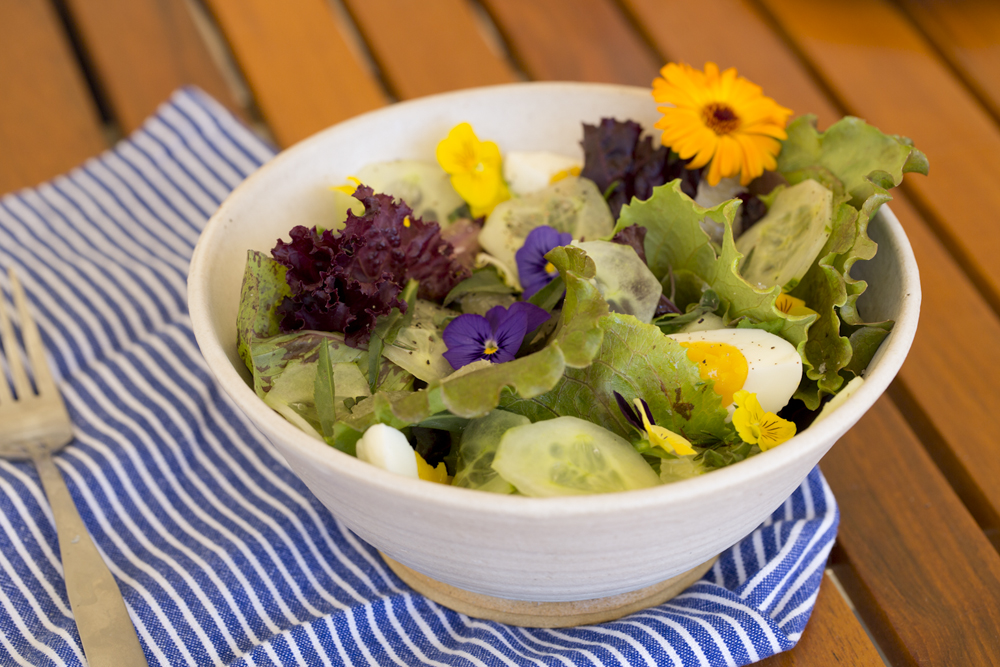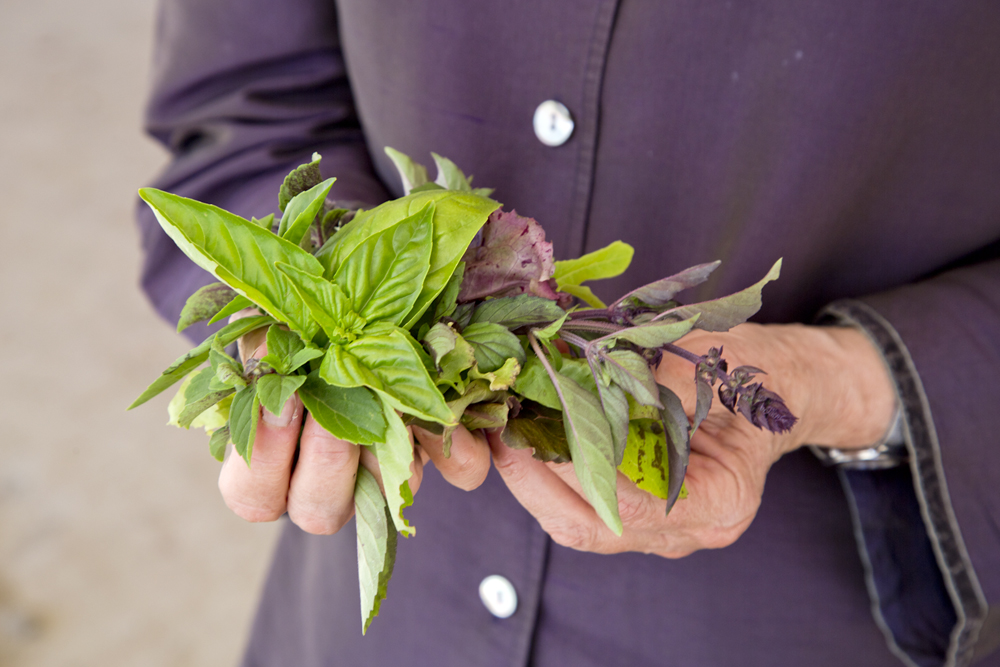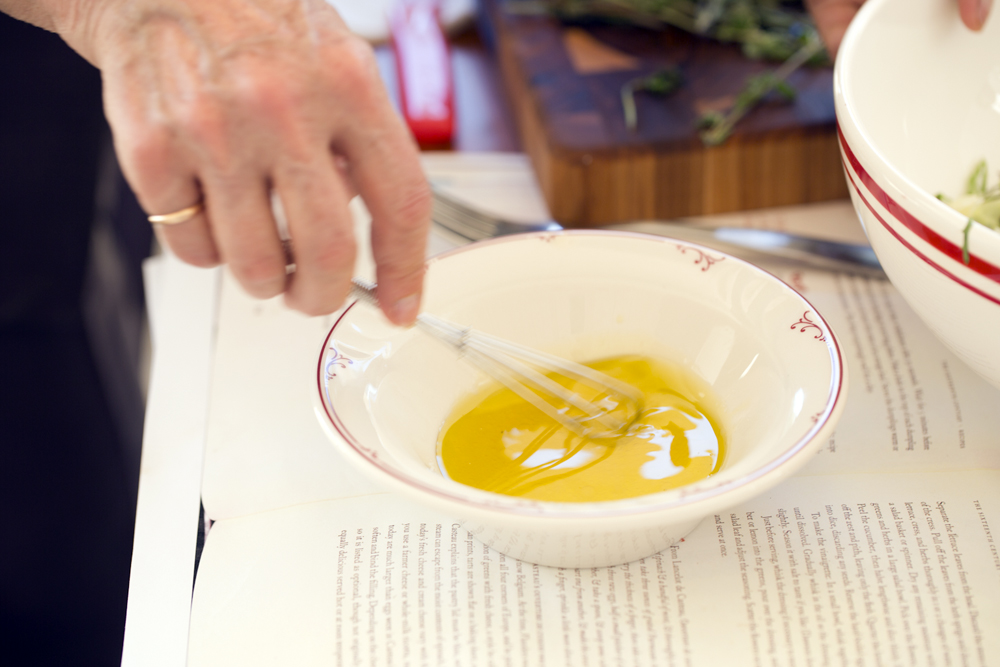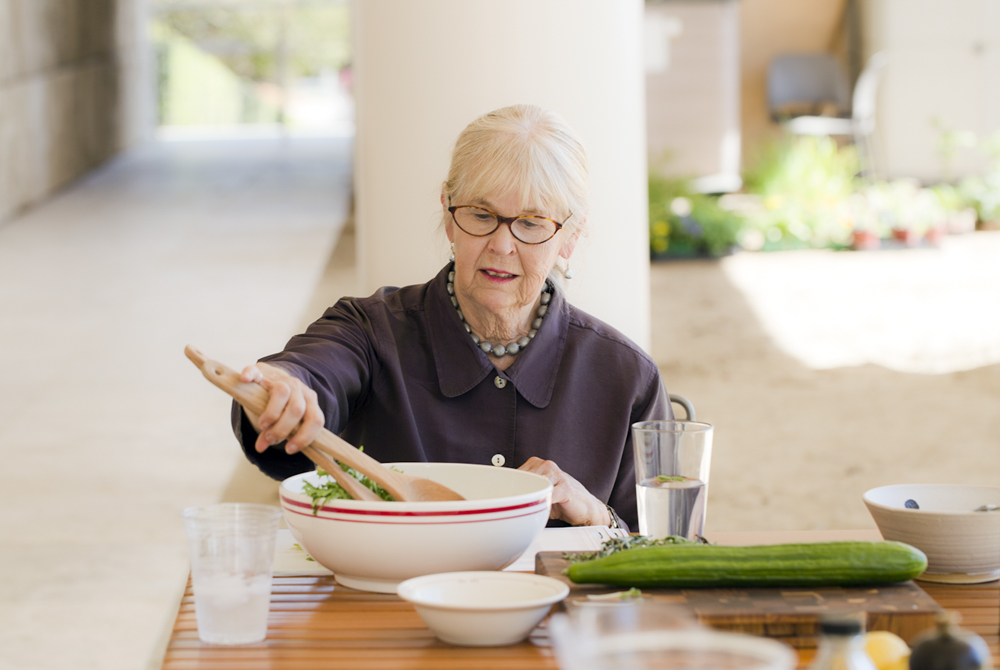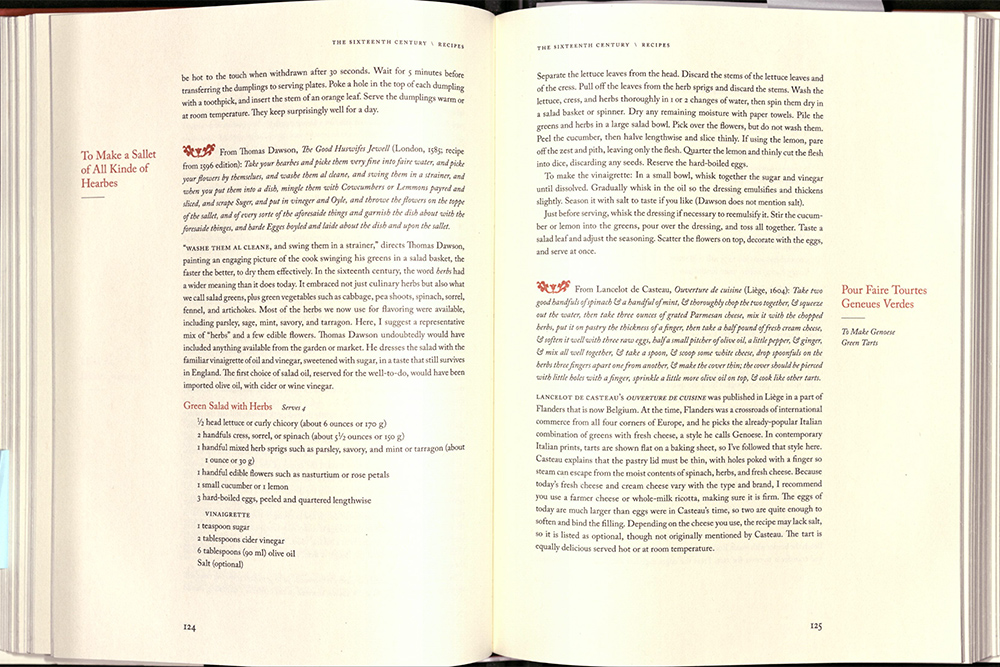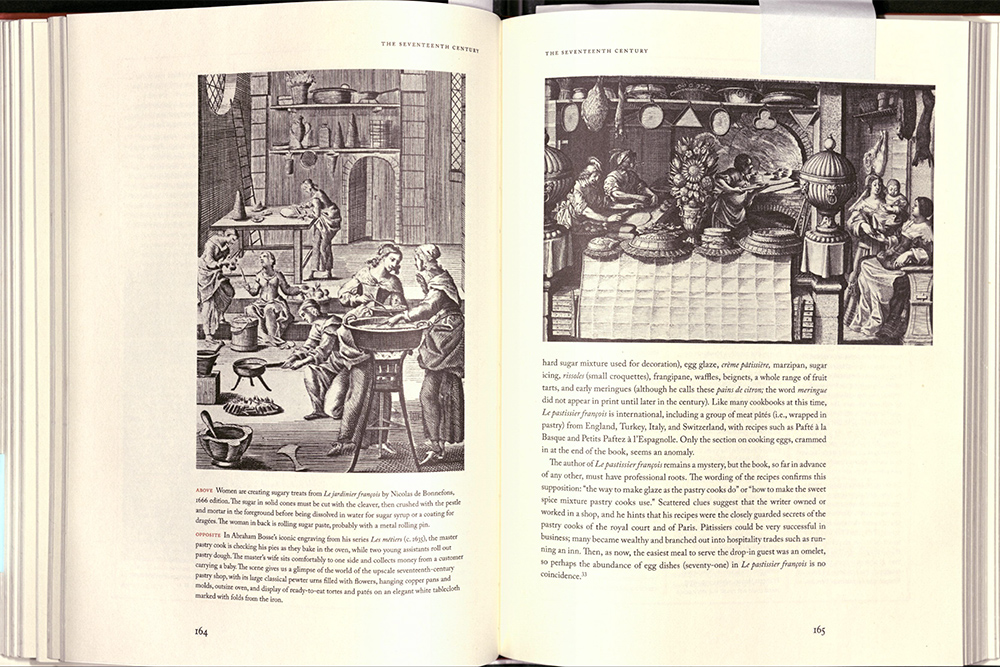Mixed Greens, Herbs, Edible Flowers, Hard-Boiled Egg and Lemon Crescents
Marcia Reed’s Garden Salad
POSTED UNDER
- California,
- Fall,
- los angeles
NOTES
A simple recipe that relies on fresh ingredients, pungent herbs and colorful edible flowers. Don’t be shy when it comes to the salt.
RECIPE
DIFFICULTY
EASY
SERVES
6
PREP TIME
5 MINS
Salad
-
4cupslettuce or curly chicory
-
2cupswatercress, sorrel, or spinach
-
1cupparsley, savory, mint, or tarragon
-
1cupnasturtium, rose petals, or other edible flower
-
1small cucumber
-
3hard-boiled eggs, peeled and quartered length-wise
-
1lemon
Dressing
-
1tspsugar
-
2tbsBragg's apple cider vinegar
-
6tbsolive oil
-
salt
POSTED UNDER
- California,
- Fall,
- los angeles
Marcia Reed is the Chief Curator at the Getty Research Institute, one of the world’s most important collections of rare books, prints and historical archives. She has spent the last 20 years building that library, book by book, but if that wasn’t a dreamy enough job, she also curates crowd pleasing exhibitions from their vast holdings. My project at the Getty Museum, The Salad For President Getty Salad Garden, is now on view in tandem with Marcia’s show, The Edible Monument. For that show, Marcia pulled some pretty crazy material from the Research Institute’s Festival Collection, (yah, they have a whole collection dedicated to parties and festivals). She combed through early cookbooks and serving manuals, illustrating the makings of early modern European banquet settings and dessert buffets, with magnificent table monuments made of sugar, flowers, and fruit. These were not centerpieces, they were tablescapes.
To illustrate the magnitude of some of these edible sculptures, Marcia called in her dear friend and Culinary Historian, Ivan Day. Now, Ivan is a walking encyclopedia of knowledge about everything from the dining table at Louis XIV’s Versailles, to the very first salads in recorded history. But Ivan doesn’t just write about the food of the past, he goes ahead and makes it himself, a culinary archeologist, if you ask me (check out his blog for more of that…lots more). So, Ivan was quite possibly the only man who Marcia could call on to sculpt an historically accurate, gigantic sugar sculpture for this show. Ivan joined us for salad at the Salad For President Getty Salad Garden in the midst of installing this ambitious show. He educated us on the elaborate antecedents of today’s humble salad, while Marcia prepared a recipe from Thomas Dawson’s, The Good Housewife’s Jewell, published in London in 1585!
Marcia Reed and Ivan Day in Their Own Words
Julia Sherman: I am going to start with you Ivan, because you are possibly the only person on earth who has thought more about salad than I have. What is the origin of the salad as we know it?
David: In its original meaning, it was not about fresh greens. In Rome, en salat was a method of preserving green things in salt, that might otherwise decompose quickly.
JS: Can you give us an example of a historical salad, from say, the Renaissance?
D: There’s a wonderfully simple salad mentioned in one of the greatest 17th century French cookery books, and it’s just pomegranate seeds, lemon and orange flowers.
JS: The Edible Monument show is really all about presentation and food. It makes me wonder, how were these salads presented?
D: It begins with a peasant salad in Italy called mescolanza, which is a mixture of whatever ingredients were on hand, dressed with oil, vinegar and salt. This evolved into a very noble salad made for large feasts called Insalate Royale, that used every possible ingredient available, maybe 40 different things, and was often adorned with trees made of rosemary or laurel.
English salads at that time were really bizarre. There was a Winter salad with a castle made out of sliced turnip, placed atop a large ziggurat shaped pedestal.
JS: Can you describe these turnip castles? It is tough to imagine…
ID: If it’s Winter, you would put little bits of whipped egg white on the castle to make it look like snow. In the Summer, you would add flowers, and in Autumn you would add red currants and cherries. The ziggurat pedestal is the part that was filled with all sorts of wild plants— things like Brookline strawberry leaves, lots of flowers, dandelion, or chicory.
JS: This sounds a whole lot more complex than any salad I know…
ID: These days, we suffer from something I call “culinary amnesia.” We’ve forgotten what salads look like. This is the problem. We don’t know about what our ancestors ate.
JS: So your particular interest is the presentation of food throughout history. I understand you sculpted a giant sugar sculpture for the current show at the Getty Research Institute, The Edible Monument. How did you learn to sculpt? I dare say that is a unique skill for a culinary historian.
ID: I was trained as a botanist. But, I didn’t want to be a scientist, I wanted to be an artist. I was always drawing and painting. Then I started doing a PHD, which I didn’t finish for all sorts of complicated reasons. I have always drawn, painted, and sculpted.
JS: So where does your passion for rare cookbooks come from?
ID: At a very young age I started to collect very old cookery books. I bought my first cookbook from a rare book store at the age of 13, and that book became an obsession. I started collecting rare books from then on. Actually, one of the very first books I bought was a book on salads.
JS: Marcia, where does your love of books stem from? Does this passion have an origin story for you?
Marcia Reed: I have always loved to read, sometimes think I should change how my last name is spelled.
JS: Marcia, you have been instrumental in building the GRI’s famous collection from the get-go. How did you end up at The Getty? Did you study art history or is your focus more on rare books?
MR: Actually I studied both art history and rare books together with a wonderful professor, Dr. Hellmut Lehmann-Haupt. Can you tell he was German? He is also the father of the NYT book reviewer Christopher LH. I loved what he did, but I never imagined this was a real job you could apply for.
JS: What do you keep in mind when acquiring new material? What is the macro vision for the collection?
MR: We acquire works that seem to hold interesting potential for research in art history and visual culture, showing how people communicated using images, designs and diagrams, often paired imaginatively with texts.
JS: Do you personally have a favorite subject or category within the collection? The span is so vast!
MR: My favorites are the popular prints. There are quite a number in The Edible Monument exhibition: the Land of Cockaigne; Peasants Wedding playing cards, caricatures of, “the cook” and other culinary types by Nicholas Larmessin.
JS: Is there the sense that you could never be bored with this job? I mean, there are always more books to discover…
MR: Yes, when days are sometimes a bit tiresome or annoyingly bureaucratic, I just descend into the vaults, work on one of my writing or research projects, and return to the fray with a smile on my face. Haha, but seriously!
JS: Do you enjoy cooking? How did you come across this recipe?
MR: I cook when I have time, particularly like to make pies and cookies. What is strange is that when I cook, I don’t really like to eat what I cook. I guess that I enjoy the cooking for the process. The recipe comes from my friend Anne Willan’s Cookbook Library. She takes vintage recipes and makes them doable. When you were here at the Getty what worked nicely was that making the salad (which is actually more assembly than cooking) worked like a facilitator to our talking to each other… But, I guess you know that?!
JS: Yes indeed; in there you have the essence of the Salad project. What do you do when you are not working with books?
MR: Ride my bike to the beach on weekends; walk our cocker spaniel Charlie; hang out with family and friends on our roof deck in Venice, watching the sunset.
